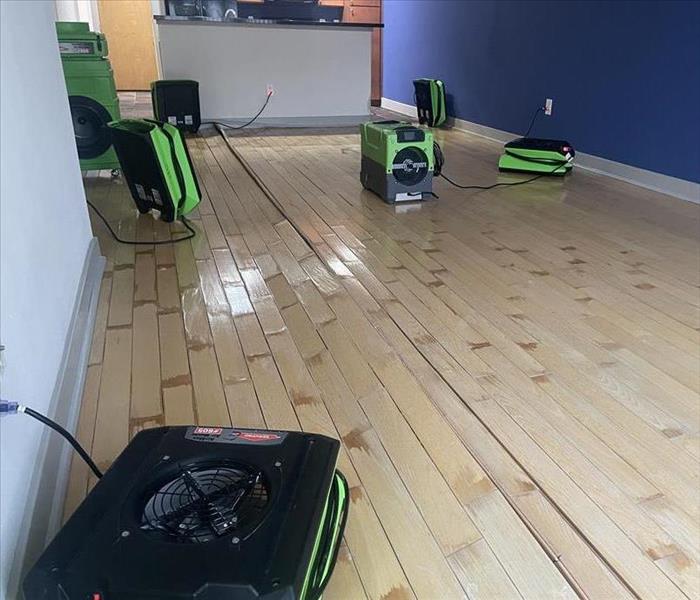Handling Water Damage During Home Renovations
10/16/2024 (Permalink)
Renovating your home can be an exciting process, but it can also come with its fair share of challenges. One of the most significant issues homeowners face during renovations is water damage. Whether it's from a leaky roof, burst pipes, or unexpected flooding, water damage can quickly turn your dream project into a nightmare. Here’s how to handle water damage during home renovations effectively.
Identifying the Source of Water Damage
The first step in dealing with water damage during renovations is to identify the source. Water can seep into your home from various places, such as a compromised roof, faulty plumbing, or even a minor leak. Pinpointing the exact cause is crucial to preventing further damage. If you notice damp spots, water stains, or a musty odor, don’t ignore them—these could be signs of a more significant issue. It's essential to address the source immediately to avoid escalating the problem and complicating your renovation project.
Assessing the Extent of the Damage
Once you've identified the source of the water damage, the next step is to assess its extent. Water can cause a variety of problems, from warping wood and damaging drywall to compromising the structural integrity of your home. Inspect the affected areas thoroughly, looking for signs of damage like peeling paint, swollen floors, or soft spots in the walls. In some cases, you may need to remove parts of the damaged structure to get a better understanding of the scope of the issue. This assessment will help you determine whether you can proceed with your renovation as planned or if you need to take additional steps to address the damage.
Drying Out the Affected Area
Drying out the area affected by water damage is critical to preventing further issues like mold growth and structural damage. Use fans, dehumidifiers, and proper ventilation to speed up the drying process. If the damage is extensive, you may need to hire professionals to ensure the area is completely dry before continuing with your renovation. Remember, it's better to take extra time to dry the space thoroughly than to risk ongoing problems that could affect the quality and longevity of your renovation.
Repairing and Preventing Future Damage
After drying out the area, the next step is repairing the damage. Depending on the severity, this might involve replacing drywall, flooring, or even structural components. It's also a good idea to address any underlying issues that caused the water damage in the first place. This could mean fixing leaks, improving drainage around your home, or installing a better waterproofing system. Taking these preventive measures will help protect your renovation investment and ensure your home remains in top condition.
Partnering with Professionals
Handling water damage during home renovations can be daunting, but you don’t have to do it alone. Partnering with experienced professionals like SERVPRO® can help you navigate the complexities of water damage restoration, ensuring your renovation stays on track. Our team is equipped to handle everything from minor leaks to significant flood damage, allowing you to focus on bringing your renovation vision to life.

 24/7 Emergency Service
24/7 Emergency Service
